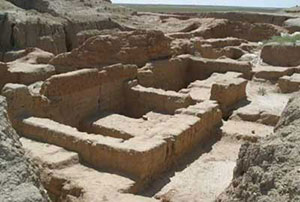HASAKAH,(ST) – Since the mid-nineteenth century, foreign archaeological missions have given great importance to the eastern area of Syria and all hope to have in the detection of archaeological treasures and finds that this area abounds dating back to the civilizations of the ancient world.
Al -Hasakah governorate embraces more than a thousand different archaeological hills according to researchers, who assert that what is hidden under these hills is greater which makes the area a unique place of its kind in the world in terms of the quality of the buried archaeological finds.
About the archaeological importance of the governorate, the director of Antiquities Bureau, Engineer Hussein Yousef, pointed out that early attention of scientists and researchers in the area dates back to the middle of the nineteenth century and still continuing until present day which underlines the importance of this region in the map of world archaeological sites through the discoveries of the important achievements of missions which confirmed that this region is one of the most important archaeological areas in the world, especially in the periods of the ancient Near East such as Orok and Helf eras.
In addition to the national missions that worked in the archaeological sites and hills, foreign missions of various countries in the world worked in the hills of Mabtouh, al –Sha’ir, al –Hasakah, Shgher Bazaar, Irbid, Helf, Al-Fkheiriya, Brak, Hamdi, Berri, Khazneh, Taban, and Mohammed Diab Hill.
The governorate has a promising tourist industry that needs more efforts of all concerned bodies in order to establish a modern infrastructure for the industry, noting that one of the most important tourist monuments is al -Hasakah Museum,” eng.Yousef said.
The area of the museum is estimated at about 10,500 square meters spread over three floors and a basement and includes a hall for displaying, a conference room, a library, and a department of archaeological research.
For his part, Chairman of the Cultural and Social Council of al –Hasakah city, Abdulrahman al –Sayed, said that the council had prepared a study for the restoration of al Mahshoush waterwheel located in the city center on the left bank of the River Khabour which was built in the early twentieth century to irrigate fields and orchards that existed on both sides of the river.
Due to this importance Mr. al -Sayed called for the rehabilitation of the archaeological sites and hills in the city and ensure services to attract tourists especially in Tel Gueirran and Budeiri in addition to Tel al -Hasakah in which an ancient cathedral was discovered dating back to the first century.
Sh.kh

